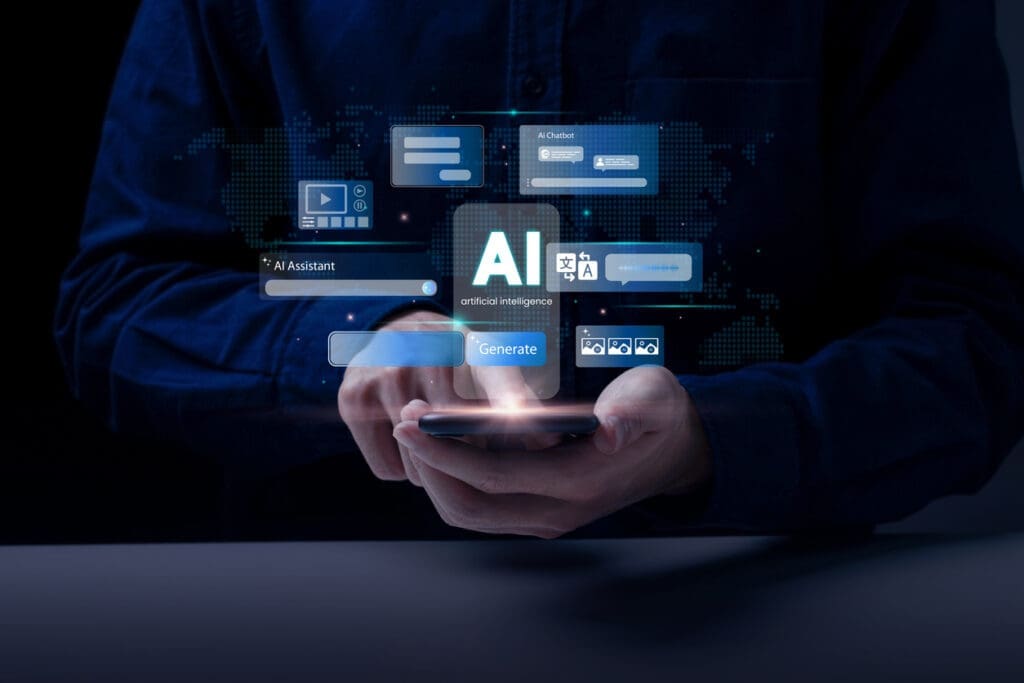Leveraging AI to Create Better Personalized Customer Experiences
How Artificial Intelligence Tools Can Help You Stay Ahead of the Curve
These days marketing can feel like a constant game of catch-up, trying to stay ahead of all the different technologies and new ways customers are interacting and connecting with companies. One of biggest shifts is toward personalized customer experiences, drilling down your techniques to the individualized level, and that can feel like a pretty big project to tackle on your own.
Enter: artificial intelligence tools.
What Do We Mean When We Talk About Personalized Customer Experiences? And Why Is It Important?
The term itself – “personalized customer experiences” – is pretty self-explanatory. Instead of creating marketing that is a one-size-fits-all for your audience, you instead develop tailored experiences to each customer through your messaging, recommendations, and so on. It’s an individualized approach that aims to look at each consumer as unique, with their own preferences and tastes. At its best, each customer journey is personalized from start to finish, utilizing key information to adapt to them at every stage of the process.
If you’re not already building personalized customer experiences into your marketing plans, you might want to prioritize it because the evidence shows that personalization pays off. It can gain you more engagement, more loyalty, and a more positive brand reputation, as well as just being overall very popular with consumers.
- In a survey of 1,000 U.S. adults by Epsilon and GBH Insights, 80% of respondents said they wanted personalization from retailers. Similarly, the 2024 State of Customer Service and CX Study, found that 81% of respondents preferred personalized experiences.
- In a McKinsey survey, 67% of consumers said they were frustrated with businesses that weren’t tailored to their needs.
- McKinsey also found that positive customer experiences through personalization yield 20% higher customer satisfaction rates, a 10-15% boost in sales conversion, and a 20-30% increase in employee engagement.
- The Bluecore 2022 Retail Ecommerce Benchmark Report found that personalized emails saw a 139% increase in click rate compared to static, one-time sends.

Want to stay up to date with the news and resources from EdwardsSchoen?
Sign up for our monthly newsletter to stay in the know!
How Is AI Impacting Personalization and Customer Experience?
The idea of personalized customer experiences pre-dates artificial intelligence’s entry into the marketing space, but AI is now making it easier and more accessible than ever before, allowing not just large corporations but also smaller organizations and businesses to leverage tools for personalization. By utilizing data analytics, algorithms, and automation, AI streamlines the workload and makes it possible to tailor every piece of content, advertising, recommendation, and interaction to the individual’s preferences and behaviors.
AI is critical to swiftly and efficiently performing tasks like:
- Collecting customer data, like online behaviors, purchasing patterns, customer interactions, and more
- Using predictive analytics to process that data in order to anticipate an individual’s interests and potential behaviors
- Segmenting customers into drilled-down categories that can be used to make personalization more efficient
- Tailoring content – from email messages to website interfaces to ad language – to give each individual a custom experience
- Suggesting new products or services that a customer might be interested by using AI-powered recommendation engines fueled by customer data and analytics
What Tools Are Out There to Help You Utilize Customer Experience AI?
It’s one thing to know that personalized customer experiences are vital and can provide a lot of positive value for your business. It’s another thing entirely to know where to go from there to make this new tech wave work for you. What are some of the tools and tactics you can implement in order to provide a better experience for your consumers?

- Chatbots and virtual assistants – You’ll see this one come up quite often because it is a common and straightforward way to provide more for your customers. AI-powered chatbots can be trained to provide answers to frequently asked questions 24/7, and those it can’t answer can be routed to a customer support representative for further assistance.
- Personalized product recommendation engines – AI analytics can power recommendations and suggestions that are truly unique to each customer by using information like browsing history, purchasing history and patterns, social media interactions, and more.
- Ad targeting – Increase the likelihood of getting your ads in front of the right consumers by using AI-targeted advertising to assess user data and discover the people who are most likely to be interested in what you have to offer.
- Omnichannel personalization and hyperpersonalization – Two growing trends in this space, AI is enabling businesses to not only target and speak to individual consumers directly, with real-time-based recommendations and dynamic pricing; it also helps you create consistent, personalized experiences across all the touchpoints a customer encounters, from website to app to social media.
- Sentiment analysis – Being able to analyze and identify how your customers feel about your brand and your product or service offerings can be priceless. AI-powered sentiment analysis can highlight when a customer is upset or common pain points consumers are experiencing, giving you the insights and opportunity to improve customer satisfaction and deescalate negative interactions.
Making AI and Personalization Work for You
There is no way around it: today’s customers want personalized, tailored experiences. They want businesses to meet them where they are and sometimes even to know what they want before they even realize they want it. And while this can be a daunting prospect if you aren’t already building your marketing campaigns in this way, AI personalization tools are making it easier to jump that learning curve. You don’t have to implement everything at once; in fact, we would recommend the opposite unless you have an experienced marketing partner who already knows the AI ropes to help guide you. Start small and build up one tool and tactic at a time. You’ll be building personalized customer journeys before you know it.
